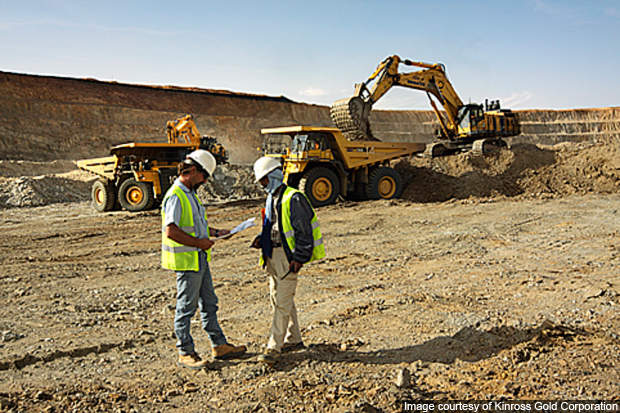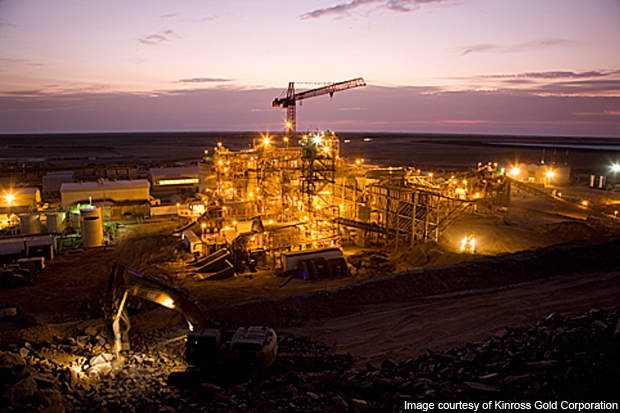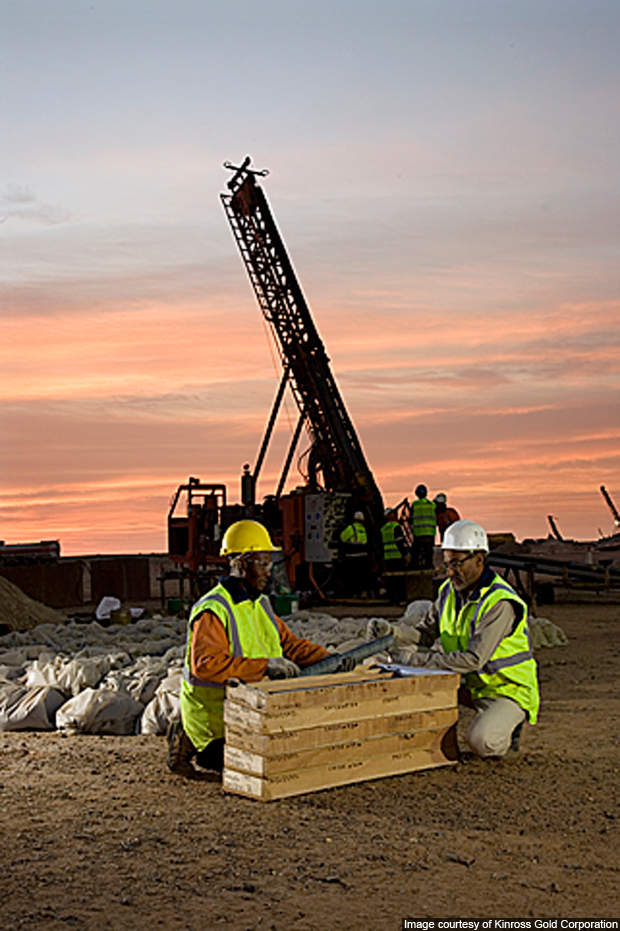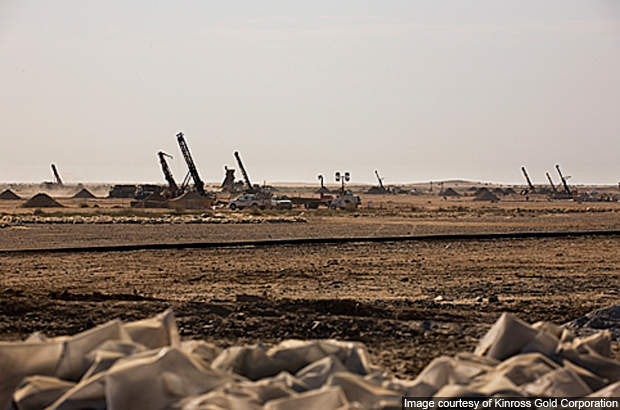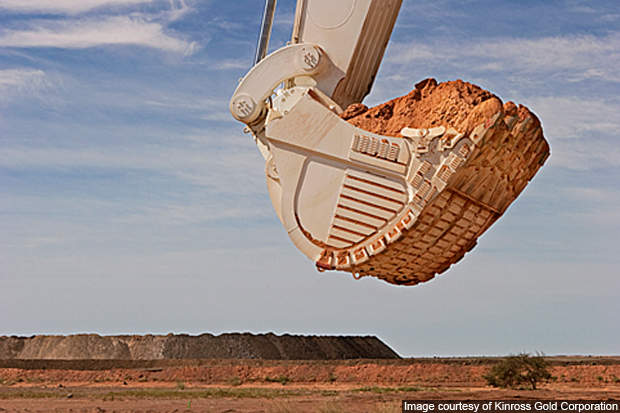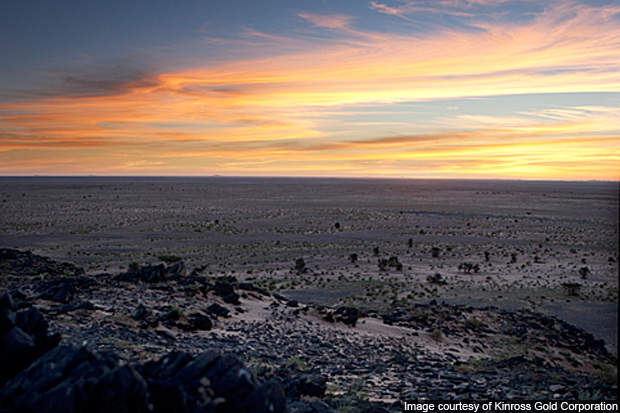The Tasiast gold mine is located about 300km north of Nouakchott and 162km east-south-east of Nouâdhibou in the north-western Mauritania. It is an open pit mine lying in a prospective greenstone belt.
Officially opened in July 2007, the gold mine began commercial operations in 2008. The gold equivalent production in 2009 was 158,657oz with a 336oz cost of sale. Production in 2012 increased to 185,334oz.
In the fourth quarter of 2009, the processing capacity was expanded from one million tons per year (Mt/y) to 2.5Mt/y. This expansion included improvements to the crushing circuit, and the addition of a CIL tank, a ball mill and a gold room.
In September 2010, Canadian gold mining company Kinross Gold (Kinross) acquired 100% ownership of the Tasiast mine from Red Back Mining. This takeover was part of a $7.1bn acquisition of Red Back Mining by the metal producer.
Tasiast produced 58,778oz of gold equivalent for the quarter ended 31 March 2018.
The life of the mine is expected to run until 2029. Kinross is currently undertaking a two phase expansion of the mine, with commercial production from two phases expected to start in June 2018 and 2020 respectively.
Geology of the Tasiast gold mine
The Tasiast mining reserve is spread over four Precambrian greenstone belts of the Reguibat shield. The core geology of the shield was formed during the Archean and Proterozoic periods and has been stable since 1,700Ma.
The mineralisation is found in the Felsic Volcanics, Banded Iron Formation (BIF) and the mafic volcaniclastic rocks.
Kinross has a mining lease permit in a 312km² area of for 30 years from 2004. It also has five contiguous exploration permits in the Tasiast-Libzenia Domain.
The mine lies beneath the 70km x 15km Aouéouat greenstone belt in the Dakhlet Nouâdhibou and Inchiri districts. Gold occurs as sheared deposits along the strike and at depths. It is mined from a 4.5km strike Piment Zone and a 1.5km Greenschist Zone.
Tasiast gold mine reserves
The proven and probable reserves at Tasiast as of December 2017 stood at 124.8Mt graded at 2.00g/t, which is equivalent to 7.861Moz (million ounces) of gold. Measured and indicated resources are estimated at 2.595Moz.
Mineralisation
Structurally controlled gold ore mineralisation is hosted in all the rock types with quartz-veining, discrete shears and faults, as well as silica-flooding.
Secondary pyrrhotite is found above a layer of brittle quartz-carbonate veining. The microfractures and veinlets of the main shears contain visible coarse gold.
Tasiast mining operations
The ore is being mined using conventional open pit methods. Separation of waste from the ore is done using selective mining techniques. The mining fleet includes several 120t hydraulic excavators and 90t trucks.
The project site is located in a remote area and does not have electricity grid. Three 2.7MW HFO generator sets generate electricity for mining, while eight 1MW diesel generators are available as spares.
Processing
The ore is treated using three stage crushing, ball milling and carbon-in-leaching (CIL). A heap leach facility is available to process the run-of-mine, lower grade oxide ore.
The pre-leach thickened high-grade ore is processed by passing it through a six stage CIL circuit. An elute circuit extracts the gold from the ore onto wire wool cathodes through the electrowinning process. The loaded steel wool is smelted to produce the bullion product.
Building up of coarse gold in the higher grade primary ores process is prevented by installing a gravity circuit in the grinding circuit. The low-grade oxide is processed in a run-of-mine heap leach facility.
Under a contractual agreement, MKS Finance ships the produced gold to Switzerland for refining at the Produits Artistiques Métaux Précieux (PAMP) gold refinery.
Expansion of Tasiast mine
Kinross planned to invest $1.5bn for the expansion of Tasiast mine by 2013. The expansion plan is, however, deferred until 2015 due to the decline in gold prices.
The phase one expansion includes the construction of a new mill to increase the processing capacity from the current 8,000t/d to 12,000t/d. The expansion is currently underway, and is expected to achieve full throughput by the end of June 2018.
Decision to proceed with phase two was taken in September 2017, and the expansion is estimated to increase mill capacity to 30,000t/d. The mine is expected to produce an average of approximately 812,000oz of Au a year, following the expansion.
Initial construction under the second phase is anticipated to begin in 2018 and commercial production is expected in the third quarter of 2020.
Contractors involved
Wood was awarded the engineering, procurement and construction management services contract for phase two expansion of the gold mine. The company also executed the feasibility study for the expansion project.

